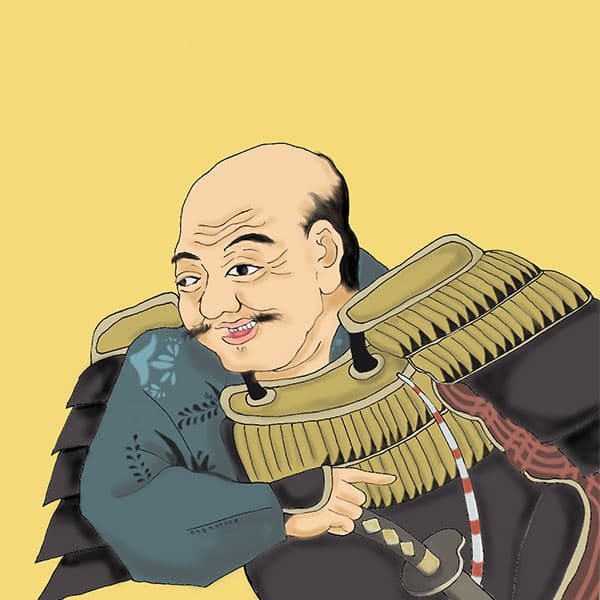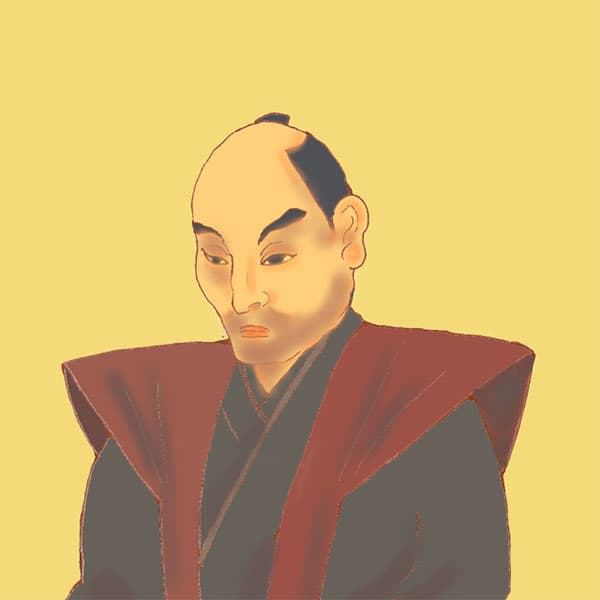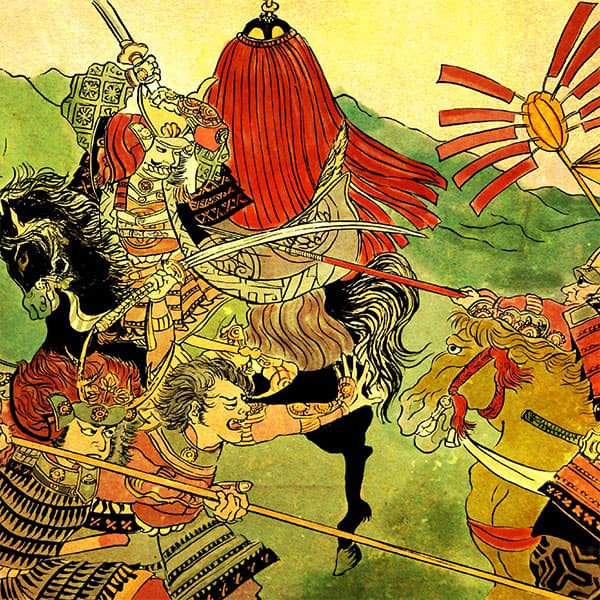Tadanori Okubo (2/2)A loyal vassal who supported the Tokugawa family and was replaced by Ieyasu.

Tadanori Okubo
- Article category
- biography
- name
- Tadanori Okubo (1553-1628)
- place of birth
- Kanagawa Prefecture
- Related castles

Odawara Castle
- related incident
Okubo Nagayasu was highly appointed by Okubo Tadayoshi and was responsible for managing gold mines throughout Japan. As a result, they falsified their income and expenses and engaged in illegal accumulation of wealth.
As a result, the child of Changan committed seppuku. (Okubo Nagayasu Incident)
A disturbing atmosphere surrounds Tadashi.
Then, on January 19, 1614, Tadayuki Okubo was ordered to be transferred from the Shogunate.
Tadanin was ordered to expel Christians from Kyoto on December 19th of the previous year, and on January 18th, the day before the reform, he destroyed Bantenrenji Temple, forcibly converted believers, and expelled those who refused to convert.
Tadanori, who was given the offer of change, was entrusted to Naotaka Ii, who ruled Hikone in Omi (present-day Hikone City, Shiga Prefecture). At this time, he was given a chigyochi worth 5,000 koku.
Tadanori submitted a statement of defense through Amami, a close aide of Tokugawa Ieyasu, but in the end it was never approved.
The reason for the change is still unclear.
There is a book from the time that states that Baba Hachizaemon, a ronin of the old Anayamashu (a group of stonemasons needed when building castles and excavating gold mines), accused Tadanori of plotting a rebellion.
Or, in 1611, Tadatsune Okubo, the eldest son of Tadori Okubo, died of illness. Tadanori became depressed and neglected his political duties, which caused the displeasure of Tokugawa Ieyasu.
In addition, Hidetada Tokugawa, who was displeased with the fact that Tadanori was forming a faction within Edo Castle, had his vassals submit a petition pledging loyalty.
There are also other reasons, such as being ostracized by political opponents, and the specific reasons are still unknown.
Tadayuki Okubo then became a monk and took the name Keian Dohaku, and died on June 27, 1628, at the age of 75. He was never forgiven by the Shogunate until his death.
Odawara Castle ruled by Tadayuki Okubo
Odawara Castle, ruled by Tadayuki Okubo, is said to have been the residence of the Kobayakawa family at the end of the Heian period.
After that, the first castle was completed during the Muromachi period, when the Omori clan ruled.
However, when Ise Moritoki (Hojo Soun) took Odawara Castle from Omori Fujiyori, Moritoki greatly expanded Odawara Castle.
When the Hojo clan began to compete with the Uesugi clan in Echigo and the Takeda clan in Kai, Odawara Castle underwent major renovations in 1566 as a countermeasure. This renovation was repeated until the Hojo family was destroyed by Toyotomi Hideyoshi's Odawara Siege.
Under the Hojo clan, Odawara Castle was built into a mountain castle with the current castle tower at its center, and later renovations led to the construction of Ninomaru and Sannomaru on the plains. It is said that the area was the same size as the current Odawara city area.
When Tadayoshi Okubo entered Odawara Castle, he no longer needed such a large castle, so he reduced its size. After that, the Okubo family left Odawara due to Tadashi Okubo's change of residence, but returned to Odawara under Tadatomo Okubo, Tadadori's grandson. From then on, it was ruled by the Okubo clan until the Meiji period.
Odawara Castle suffered from major earthquakes twice, in 1633 and 1703.
In particular, the Genroku earthquake caused major damage, with the castle tower and turrets collapsing.
The castle tower was rebuilt in 1706. This rebuilt Odawara Castle tower remained in existence until the Meiji era, when castles around the country were dismantled by the Meiji government.
Tadashi Okubo and places related to the Okubo clan
- Okubo Shrine
- During the Tadanin era, the Okubo clan became Kaiyaku.
However, due to the great military exploits of the Okubo family through successive generations, Tadayoshi Okubo's grandson Tadayuki was reinstated as a daimyo. Since Tadamoto had no children to succeed him, Tadatomo, who was also Tadanori's grandson, succeeded Tadamoto. Tadatomo later returned to the lord of Odawara domain with 113,000 koku.
The 9th generation, Tadamasa, held important positions in the shogunate, including Osaka castle lord, Kyoto shoshidai, and roju.
In the administration of the domain, he promoted many people, including Sontoku Ninomiya, and even hired junior officials, making him known as a master of the Okubo clan.
From then on, the Okubo family served as the lords of the Odawara domain until the era of the 15th generation, Tadayoshi Tadayoshi, when the feudal domain was abolished and the establishment of prefectures took place.
Okubo Shrine, located in Shiroyama, Odawara City, was built in 1893 on the ruins of Odawara Castle's castle tower, and enshrines the founder of the domain, Tadayo Okubo, and the 9th generation Tadazane, who was said to be a great lord.
In 1899, plans were made to use the site, including the main shrine building in the castle tower, as an official residence for the imperial family. As a result, the shrine building that had been there had to be moved elsewhere, so it was moved to its current location in 1900. - Stone monument at the remains of Tadachika Okubo's residence
- When Tadayuki Okubo was left in the care of Naotaka Ii and was imprisoned, he took the name Keian Dohaku and became a monk. Although he was given 5,000 koku as a chigyochi, he was never forgiven by Tokugawa Ieyasu and Hidetada.
In Hikone City, Shiga Prefecture, there is a stone monument at the place where Okubo Tadachika was imprisoned, which reads ``Okubo Tadachika's Imprisonment Remains''. - Stone monument of the birthplace of the Okubo clan
- Kamiwada-cho, Okazaki City, Aichi Prefecture was the first place ruled by the Okubo clan. When the Matsudaira family ruled Mikawa, Kamiwada Castle was here, and the Okubo clan lived around the castle. At the birthplace of the Okubo clan, there is a stone monument that says ``Okubo Clan Site.''
Reread the article by Tadayuki Okubo
- related incident

- WriterTomoyo Hazuki(Writer)I have loved history and geography since my student days, and have enjoyed visiting historical sites, temples and shrines, and researching ancient documents. He is especially strong in medieval Japanese history and European history in world history, and has read a wide range of things, including primary sources and historical entertainment novels. There are so many favorite military commanders and castles that I can't name them, but I especially like Hisashi Matsunaga and Mitsuhide Akechi, and when it comes to castles, I like Hikone Castle and Fushimi Castle. Once you start talking about the lives of warlords and the history of castles, there's a side of you that can't stop talking about them.





